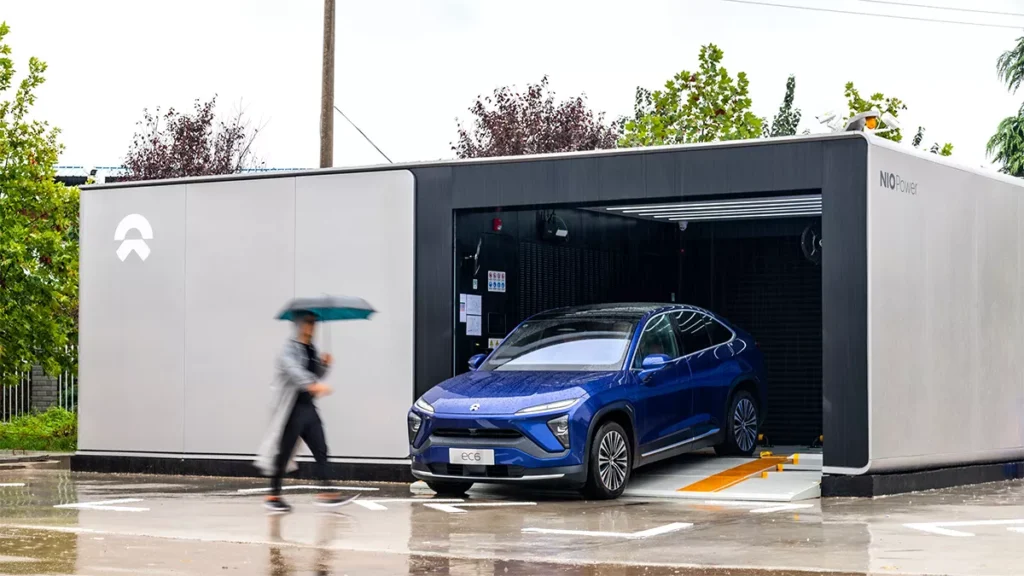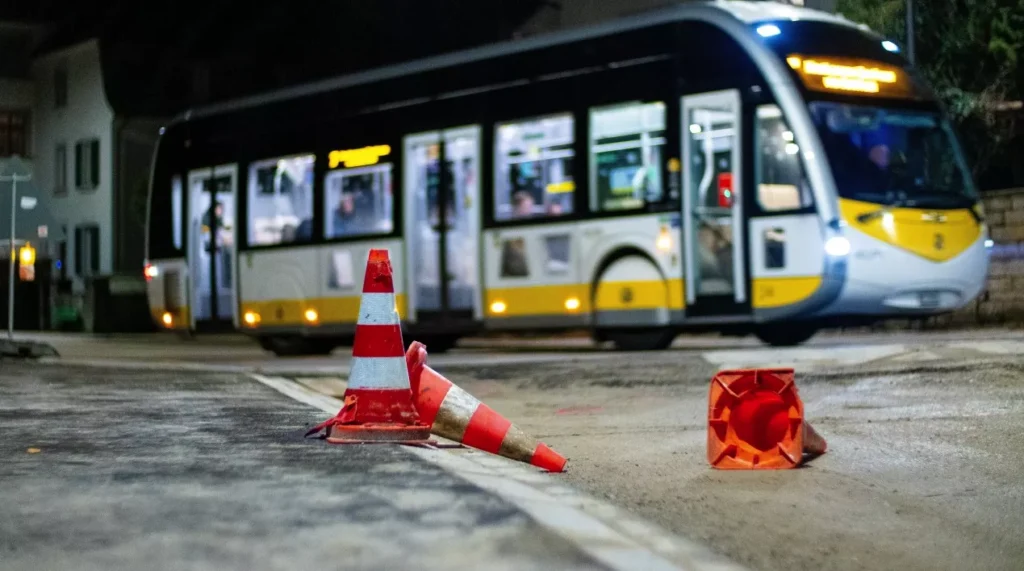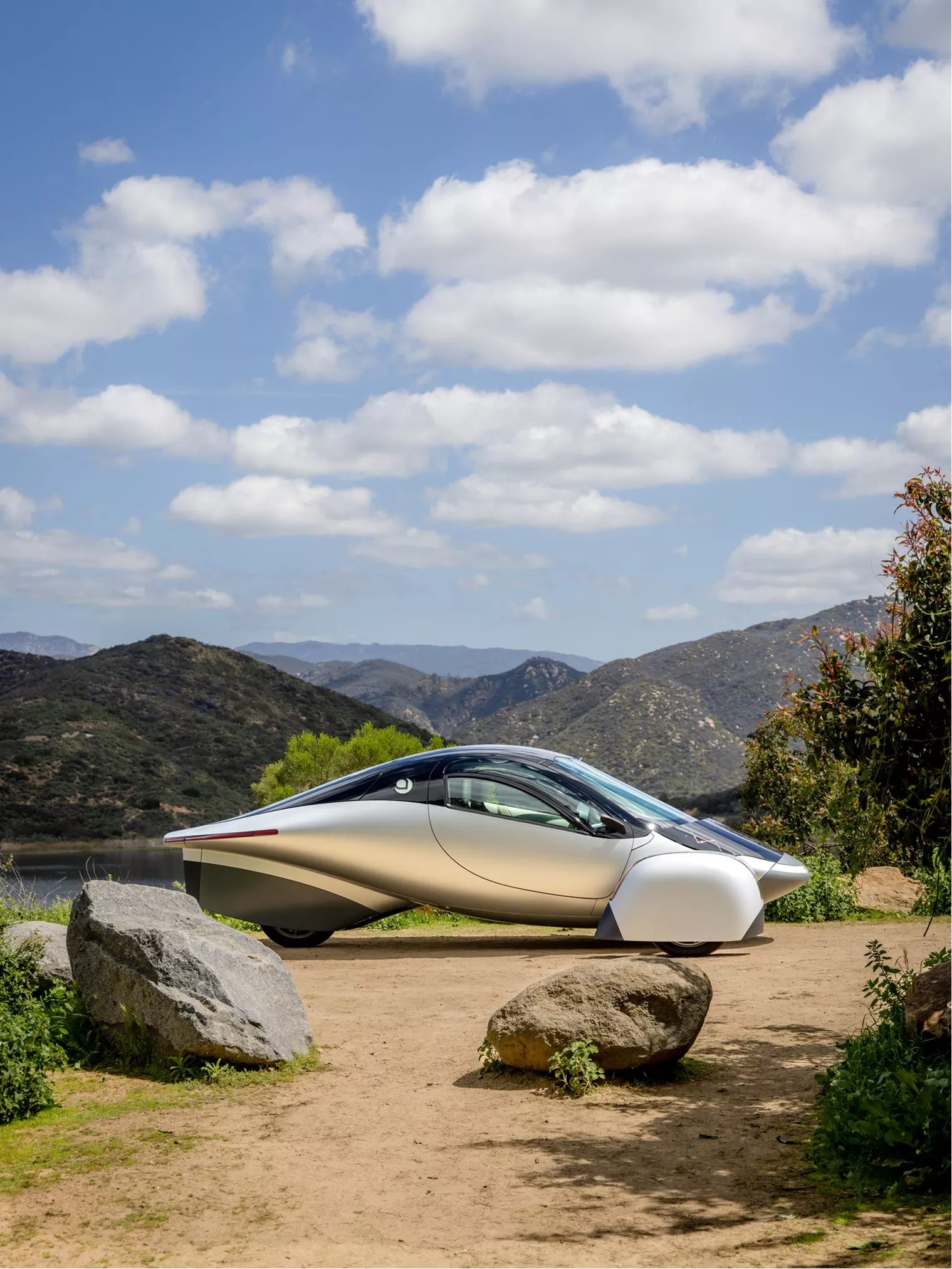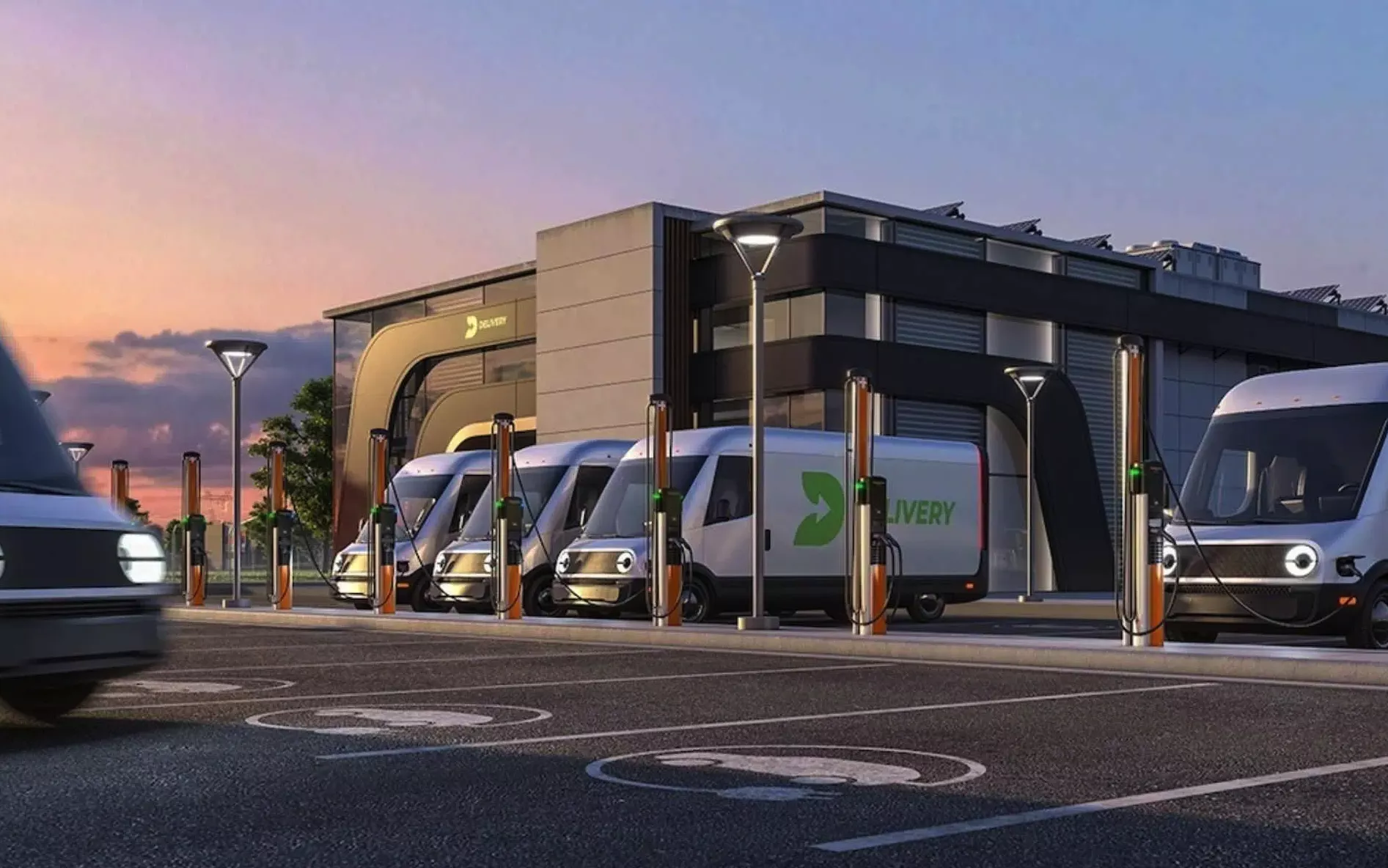










From EVs and batteries to autonomous vehicles and urban transport, we cover what actually matters. Delivered to your inbox weekly.

Fleet electrification is charging ahead — fast. Companies worldwide are shifting gears, trading diesel for electric fleet vehicles, driven by tighter regulations, soaring fuel costs, and pressure for sustainable business practices.
But successful fleet electrification planning isn’t plug-and-play. It demands strategy, preparation, and insight into market trends and technology.
So, what’s powering this shift, and how can your business benefit?
We’ll unpack real-world examples, tackle common challenges, and spotlight the electrification of fleets as the smartest move companies can make today.
Fleet electrification means swapping out gas-guzzling vehicles for EVs at scale. We’re talking full fleets: delivery vans, service trucks, last-mile scooters, you name it.
At its core, an electric fleet is any group of vehicles powered by batteries instead of combustion engines. Think zero tailpipe emissions, quieter operations, and far lower fuel costs. At its core, fleet electrification means building the charging network, syncing with smart software, and rethinking how transport runs.
Why now? Because the pressure’s on — climate targets, fuel volatility, and rising regulations are forcing companies to move fast. Companies that get ahead are in for massive cost savings, cleaner branding, and future-proof logistics. A sound strategy — and it’s happening fast.
Electrifying a fleet involves a clear, strategic step-by-step approach. Here’s how companies are making the shift:
📊 Audit the fleet
Start with the data. What vehicles do you have, how far do they drive, and where do they idle? No guesswork — just cold, hard numbers.
🔌 Build the charging backbone
No chargers, no fleet. Whether it’s depot, public, or on-route charging — infrastructure comes first. Get this wrong and the whole system stalls.
🚚 Get the right EVs
Pick EVs that fit the job. Delivery vans? Long-haulers? City cars? It’s not one-size-fits-all. Range, payload, and charging speed all matter.
📱 Plug Into fleet management
Real-time data, remote diagnostics, smart charging schedules… EVs need digital oversight to run lean and clean.
📈 Scale what works
Once the first wave is rolling, double down. Optimize routes, monitor savings, and keep pushing until the old fleet is history.
Fleet electrification is now beyond a simple trend. This is an industry-wide transformation and companies that treat it like a side project will fall behind. The ones treating it like a core strategy? They’re already far ahead.
Much more than just a “green flex”, this business decision comes with serious upside.
EVs crush it on running costs. No oil changes. Fewer moving parts. And electricity is far cheaper than diesel or gas. According to Geotab, EVs can reduce total cost of ownership by up to 25%, depending on vehicle type and region. Less downtime. More uptime. Better margins.
Transportation accounts for nearly 23% of global energy-related CO₂ emissions. Every electric vehicle in your fleet slashes that footprint — and when paired with renewable charging, the impact multiplies. The great thing about fleet electrification is it’s measurable.
Customers care. So do investors. Companies making the switch aren’t just ticking ESG boxes — they’re building trust and showing leadership. DHL, Amazon, FedEx — they’re all investing in EVs not just for optics, but because it speaks to where the world is heading.
Cities are rolling out zero-emission zones. Countries are setting phase-out dates for internal combustion engines. Electrification won’t be optional for long — it’s more of a compliance play. Making the shift now means avoiding the scramble later.
Going electric now is more about outpacing the competition than it is about future-proofing. The tech is ready, the incentives are live, and the road’s wide open.

Electrifying a fleet isn’t as simple as swapping out keys. It’s a full-scale operational pivot. From infrastructure to mindset, here’s what companies are up against (and what they can do about it).
Charging infrastructure is lagging behind the curve — and fleets are feeling it. Most public chargers aren’t built for high-volume, high-speed needs.
That’s why forward-thinking companies are ditching the wait-and-hope approach and investing in private depot setups, smart charging systems, and partnerships with providers like ABB and Electrada.
The demand is massive: McKinsey estimates the U.S. alone will need 1.2 million public chargers by 2030 just to keep up.

Let’s not sugarcoat it — going electric isn’t cheap out of the gate. EVs cost more upfront, and installing chargers can drain budgets fast, especially at scale.
But here’s the kicker: long-term savings flip the math. With fewer moving parts and cheaper energy, EVs cut costs where it counts. Geotab reports up to 25% lower total cost of ownership, depending on the fleet and region. Spend more now, save way more later.
Still worried about EVs running out of juice mid-route? You’re not alone. It’s one of the top concerns for fleet managers. But let’s be real — the tech has caught up.
The median range for commercial EVs now sits around 300-400 kilometers, which covers most daily fleet ops with room to spare. Add in smart route planning, telematics, and picking the right vehicle for the job, and range anxiety becomes yesterday’s problem.

Electrification is generally about rewiring how your team thinks, plans, and operates. From fleet managers to procurement to drivers, everyone’s got skin in the game.
The real challenge? Mindset. Resistance to change, fear of the unknown, and outdated workflows can stall even the best-laid electrification plans.
The fix? Start early. Train smarter. Communicate like it matters. And above all — appoint an in-house electrification champion who rallies the troops and keeps the mission on track.
Electrada calls it out clearly: successful fleet transitions don’t just need chargers and EVs — they need buy-in, alignment, and a culture ready to move.
Making the switch to electric isn’t frictionless. But fleets that face these challenges head-on, and plan for them early, are already driving laps around the competition.
This is much more than just swapping gas for volts. You’ll have to rethink how your fleet runs, from procurement to planning to the pavement.
Let’s break down what a future-proof fleet electrification strategy looks like.
Before you buy your first EV, audit your current fleet. This means:
Geotab’s EV Suitability Assesment is a great tool you can use to simulate savings and feasibility across your existing vehicles — and makes it a bit easier to plan your fleet expansion. Be sure to not miss it!
Not all EVs are built the same. Especially commercial ones. Here’s what you’ll have to consider:
And a piece of solid advice. Don’t overbuy range. Get just enough for your routes. Overspec’d EVs cost more and weigh more.
Public chargers? Not built for fleet life. You need charging that plays by your rules — fast, reliable, and always where your vehicles are.
McKinsey projects a 20x surge in U.S. fleet charging demand by 2030. If you wait, you may end up stuck in line.
There’s free money on the table — take it.
From the EU Green Deal to the U.S. Inflation Reduction Act and Singapore’s EV Early Adoption Incentive, governments are throwing serious support behind fleet electrification.
But it’s not just for the vans and trucks. You can tap into funding for:
Run the numbers, full stack. Factor in fuel savings, maintenance drops, carbon tax avoidance, and EV tax credits.
New tech is easy. Changing how people work? That’s the real challenge.
According to Roland Berger, companies often underestimate the cultural shift required to go all-electric. The risk? Delays, inefficiencies, and a rollout full of friction. The fix? Clear strategy, early training, and buy-in from the top down.
Don’t electrify everything at once — pilot smart, then scale with confidence.
Pick one region, route, or vehicle type. Test it. Track everything: uptime, driver feedback, charge success rates, TCO. Use real data to prove what works and fix what doesn’t.
Roll out in waves, not all at once. Every fleet is different, but every successful transition starts with a sharp first step.
Treat this like a complete transformation and not a procurement order.

These five companies are engineering the shift from combustion to electric at scale. If you want to understand what fleet electrification looks like in the real world, start here.
Tesla is no stranger to hype — but it’s also delivering real numbers. The Tesla Semi, launched in late 2022, has been adopted by PepsiCo, Walmart, and others for short-haul logistics. With a reported range of 500 miles and energy efficiency of under 2 kWh per mile, it’s built for long-term ROI.
Add in Tesla’s Supercharger network and fleet-focused Autopilot features, and you’ve got a vertically integrated fleet stack few can match. They’re also expanding fleet APIs and management tools, making them more accessible to commercial buyers.
✅ Fleet focus → Long-haul logistics, large-scale fleets
✅ Edge → Vertical integration + charging infrastructure

Rivian made headlines when Amazon ordered 100,000 custom-built EDVs (Electric Delivery Vans), and they’re now rolling out across major U.S. cities. These vans include integrated route planning, modular shelving, and even heated steering wheels to support long shifts.
Onboard diagnostics feed directly into fleet platforms, and the company’s commitment to sustainability-first manufacturing is winning favor with ESG-conscious brands. In 2024, Rivian also began piloting fleet-specific service centers in high-density delivery zones.
✅ Fleet focus → Last-mile, e-commerce delivery
✅ Edge → Custom hardware + Amazon partnership

BYD has gone from local giant to global fleet powerhouse. The company leads the market in electric buses (both transit and school buses) and light-duty trucks, with clients in over 70 countries. In the U.S., cities like Los Angeles, Denver, and Indianapolis operate BYD electric buses.
BYD is also pushing into commercial trucking, offering Class 6–8 electric trucks with customizable battery capacities and growing charging partnerships to support them. As of 2024, BYD has delivered over 80,000 electric commercial vehicles globally.
✅ Fleet focus → Public transit, municipal fleets, logistics
✅ Edge → Scale, affordability, proven deployments

Arrival’s approach flips the legacy model: instead of one mega factory, they build modular microfactories close to fleet operations. Their vehicles, including electric vans and buses, are built on a proprietary skateboard platform using composite materials that are cheaper and lighter than metal.
Although financial headwinds led to a production slowdown in 2023, Arrival’s partnership with UPS for 10,000+ vans remains a key case study. The company is currently restructuring to focus on core commercial vehicle offerings in high-demand markets.
✅ Fleet focus → Urban delivery, transit
✅ Edge → Microfactory model + modular design

Proterra is a quiet leader in heavy-duty fleet electrification. Their electric buses operate in over 130 transit agencies across North America. But their real growth driver is Proterra Powered — a platform that provides EV battery and drivetrain tech to OEMs like Volta Trucks, Thomas Built Buses, and Freightliner.
They’ve built their own fast-charging systems, and their batteries are engineered for high-cycle, fleet-grade usage. In 2023, Proterra filed for Chapter 11 but has since restructured with renewed focus on battery tech and powertrain supply.
✅ Fleet focus → Public transit, OEM battery integration
✅ Edge → Heavy-duty specialization + battery tech IP

Much more than a concept — and already delivering results. Here are three success stories showcasing tangible benefits of going electric.
Bolthouse Farms integrated electric trucks into their operations and saw impressive outcomes:
With 61 battery electrics and two plug-in hybrids in the plan, Denver Water is proving that even a legacy utility can shake things up.
London isn’t dabbling — it’s going all-in. With over 1,700 zero-emission buses on the road as of November 2024, the city is setting the global pace for electrifying public transit.
And it’s more than just cleaner air. A £500M investment into UK-built electric buses is revving up domestic manufacturing. For cities watching London? This is what bold fleet electrification looks like.
Fleet electrification is gaining speed on a global scale.
📈 The numbers say it all
BloombergNEF forecasts global EV sales to reach 73 million per year by 2040 — that’s 73% of all vehicle sales. For fleets, the economics are catching up fast. Heavy-duty electric trucks are projected to hit cost parity with diesel by 2030, even for long-haul routes. With battery prices falling and regulations tightening, the smart money is on fleets flipping the switch — and not looking back.
🔋 Battery tech is leveling up
Solid-state batteries, 10-minute ultra-fast charging, 600 km range — it’s all happening, fast. CATL’s next-gen packs can add 400+ km in under 10 minutes, and Samsung’s working on solid-state cells that blow today’s lithium-ion out of the water. Fleet downtime? Getting shorter by the year. Once these batteries hit scale, long-haul EVs won’t just compete — they’ll dominate.
⚡ Infrastructure is catching up
The race to electrify fleets is pushing infrastructure into high gear. Megawatt charging for trucks. Smart depot grids. Energy-as-a-service models. And it’s just the start. In the U.S. alone, McKinsey predicts a 40x surge in fleet charging demand by 2030 — and cities, utilities, and private players are scrambling to build fast. Fleets won’t be waiting in line behind passenger EVs much longer.
📜 Regulations are tightening
Governments aren’t waiting around. The EU has set hard targets: a 90% cut in CO₂ emissions from new heavy-duty vehicles by 2040. In the U.S., California is leading the charge with its Advanced Clean Fleets rule, mandating 100% zero-emission truck sales by 2036. Fall behind, and your fleet could get locked out of major markets. The message is clear: clean fleets are the ticket to staying in business.
Electrification is inevitable. The fleets that move now will save money, stay compliant, and lock in a competitive edge. Those that stall? They’ll be playing catch-up for the next decade.
The road ahead is electric — will your fleet lead or follow?
This shift is happening. Fuel prices aren’t getting friendlier. Cities are tightening rules. And clean fleets are quickly becoming the baseline, not the badge of honor.
Electrification brings more than just emissions cuts. It’s a way to gain control over costs, boost efficiency, and align with a world that’s moving faster toward clean transport.
The fleets making moves today are already seeing returns. Don’t wait for mandates or breakdowns to force your hand.
You’ve got options. Use them before they turn into obligations.